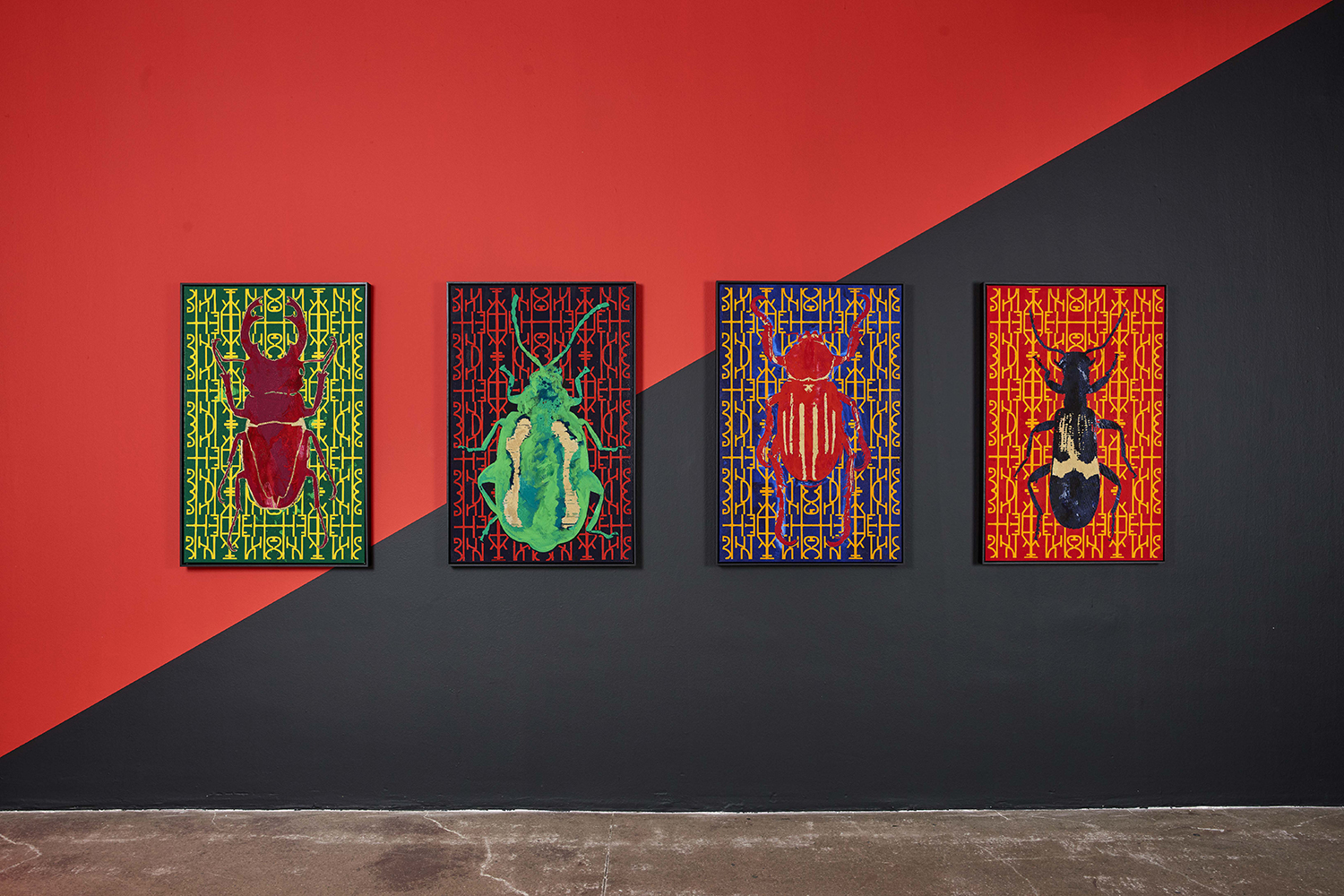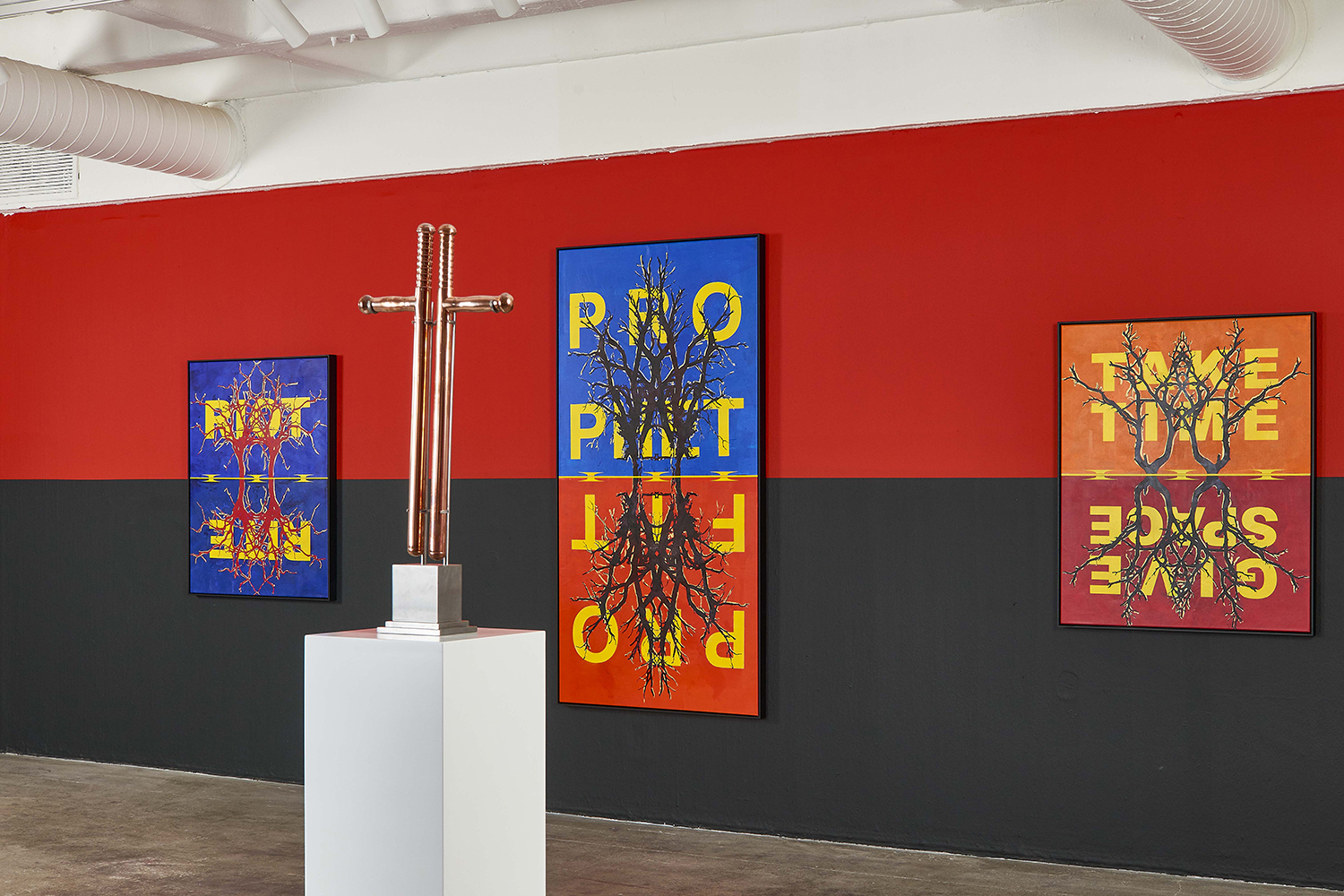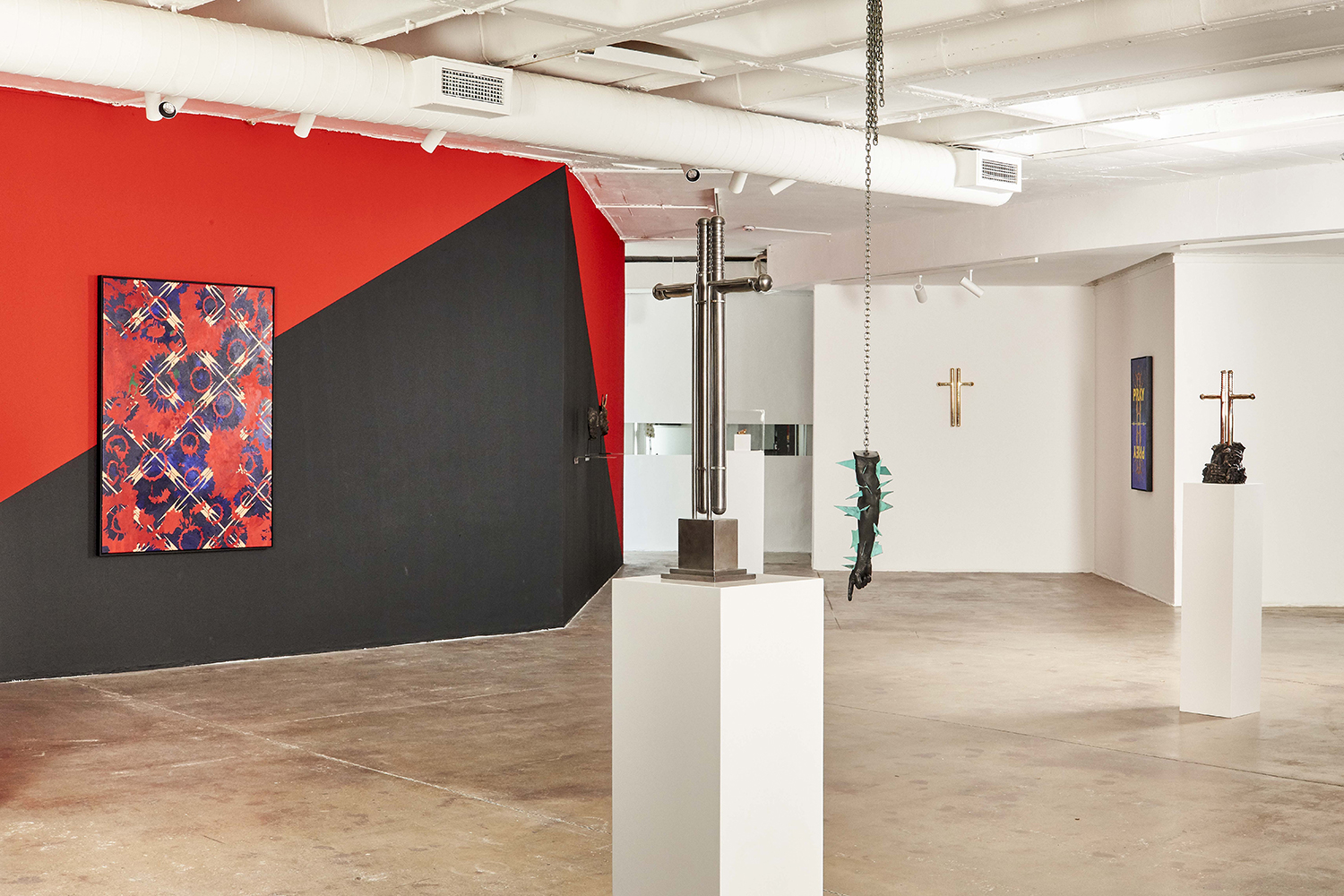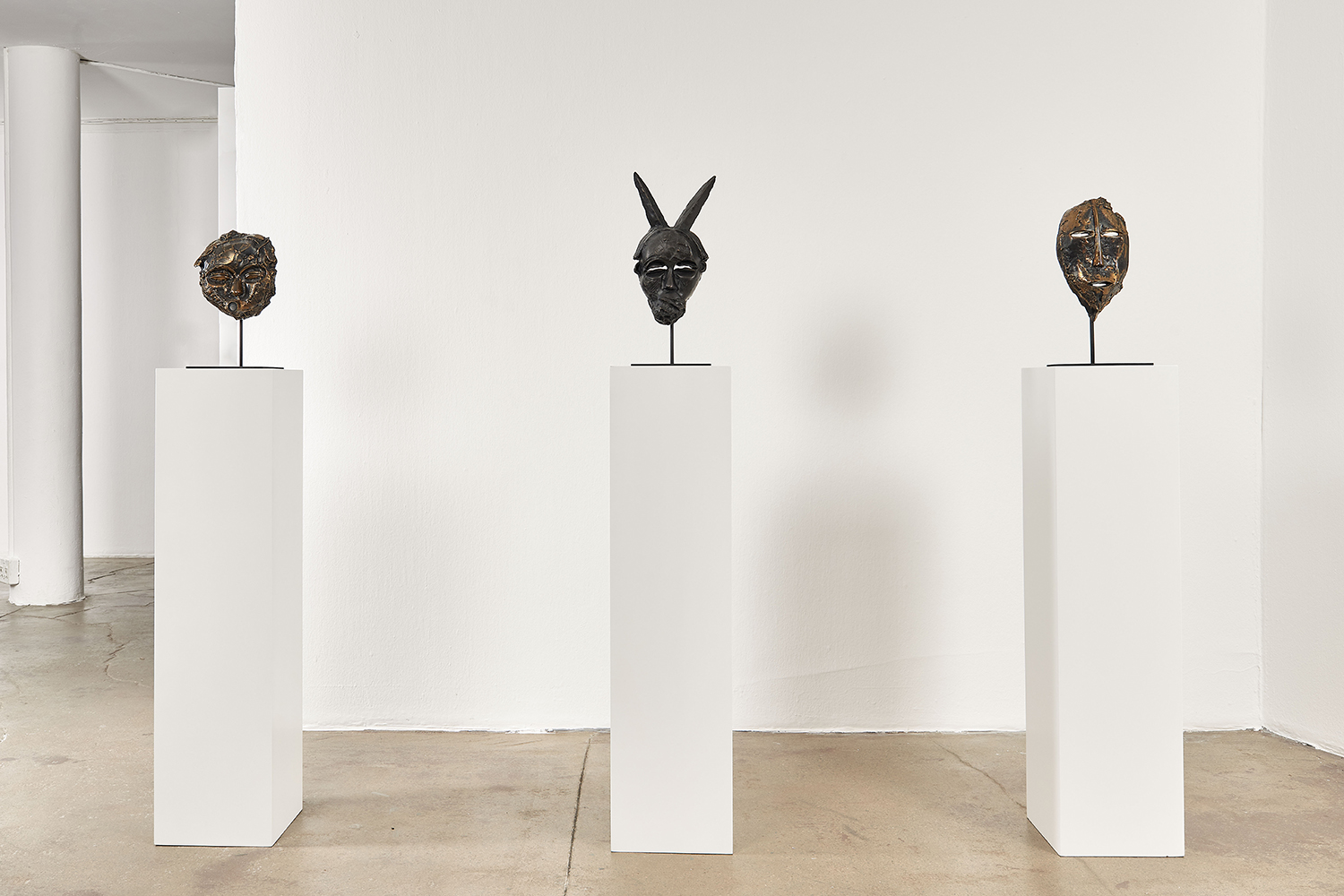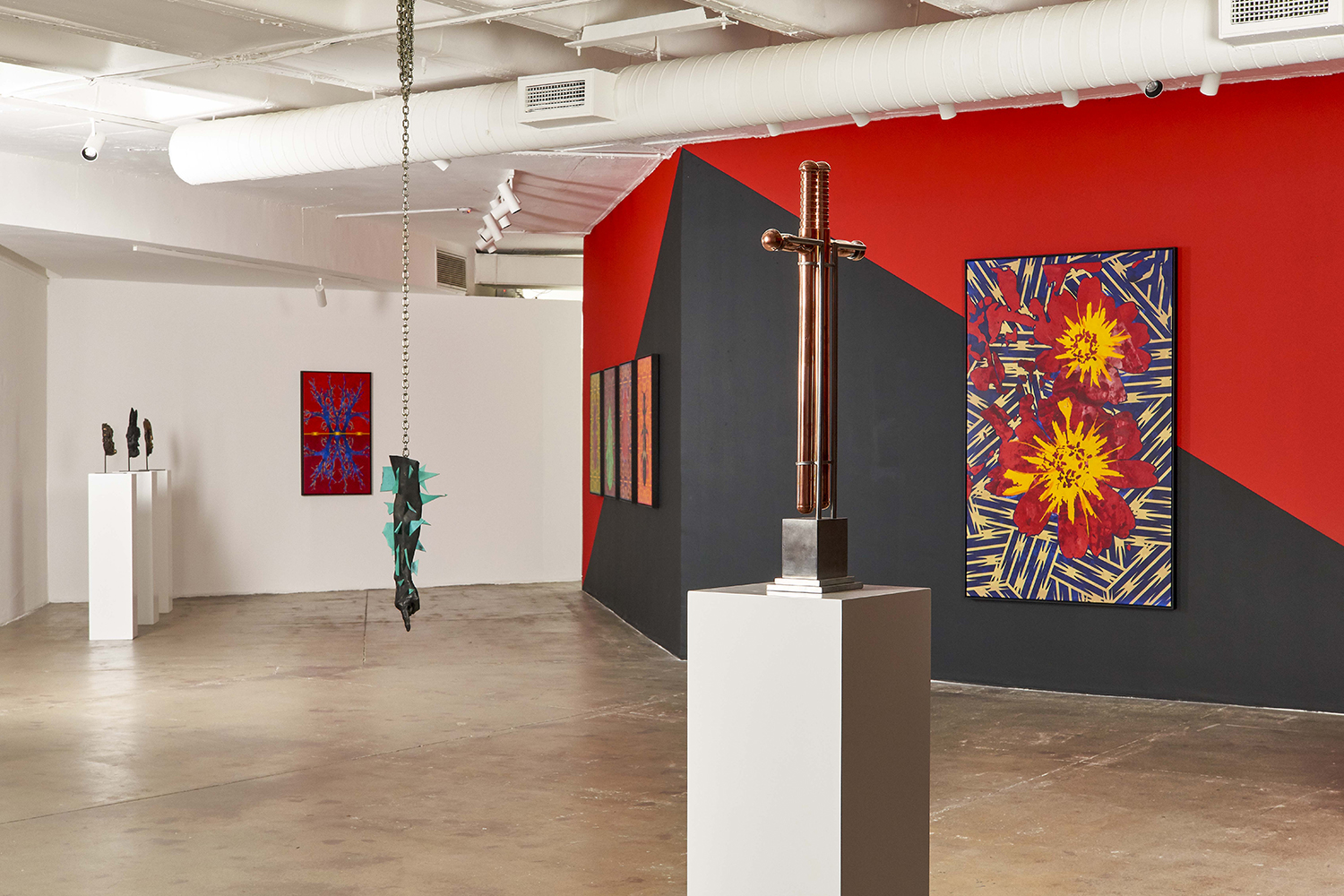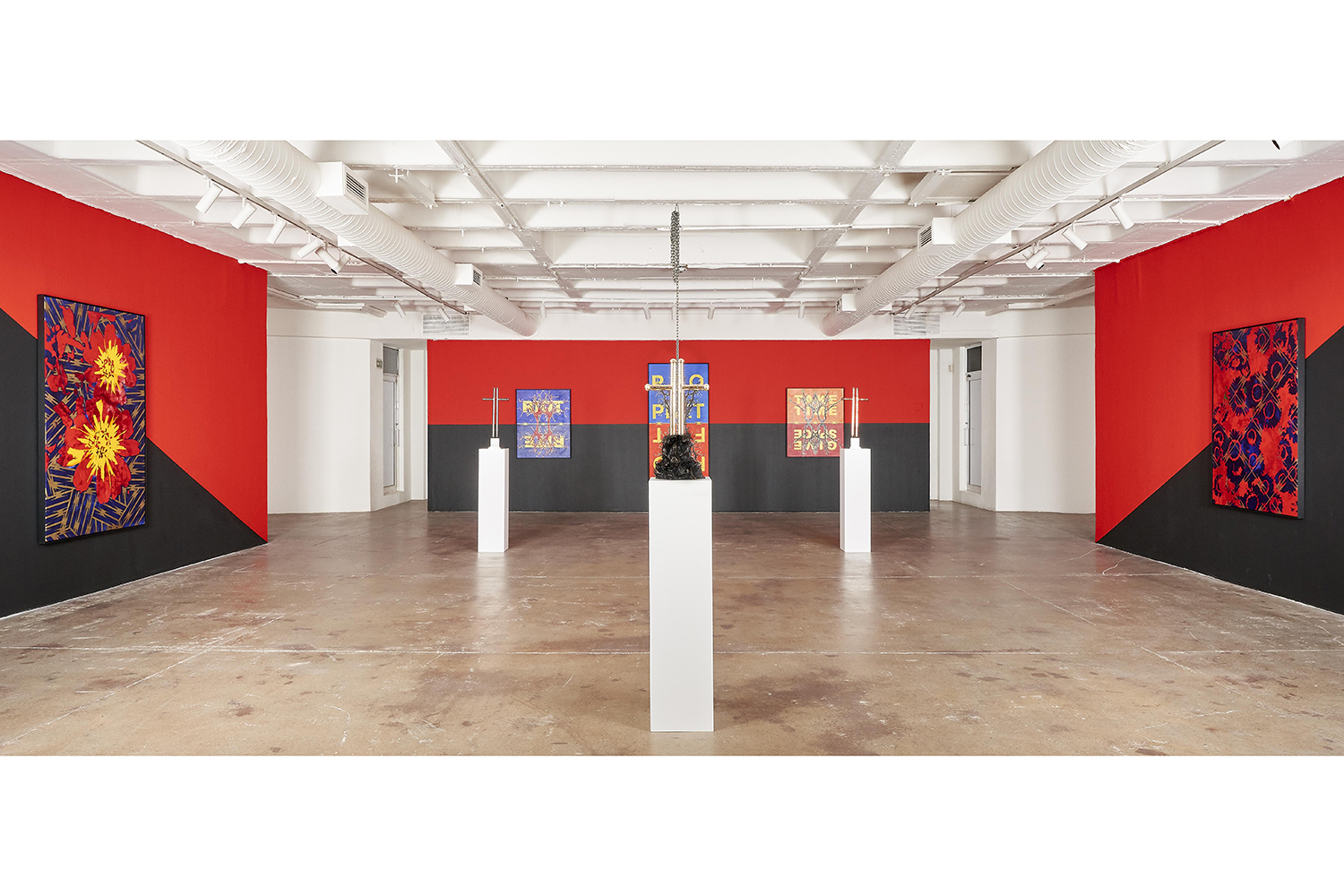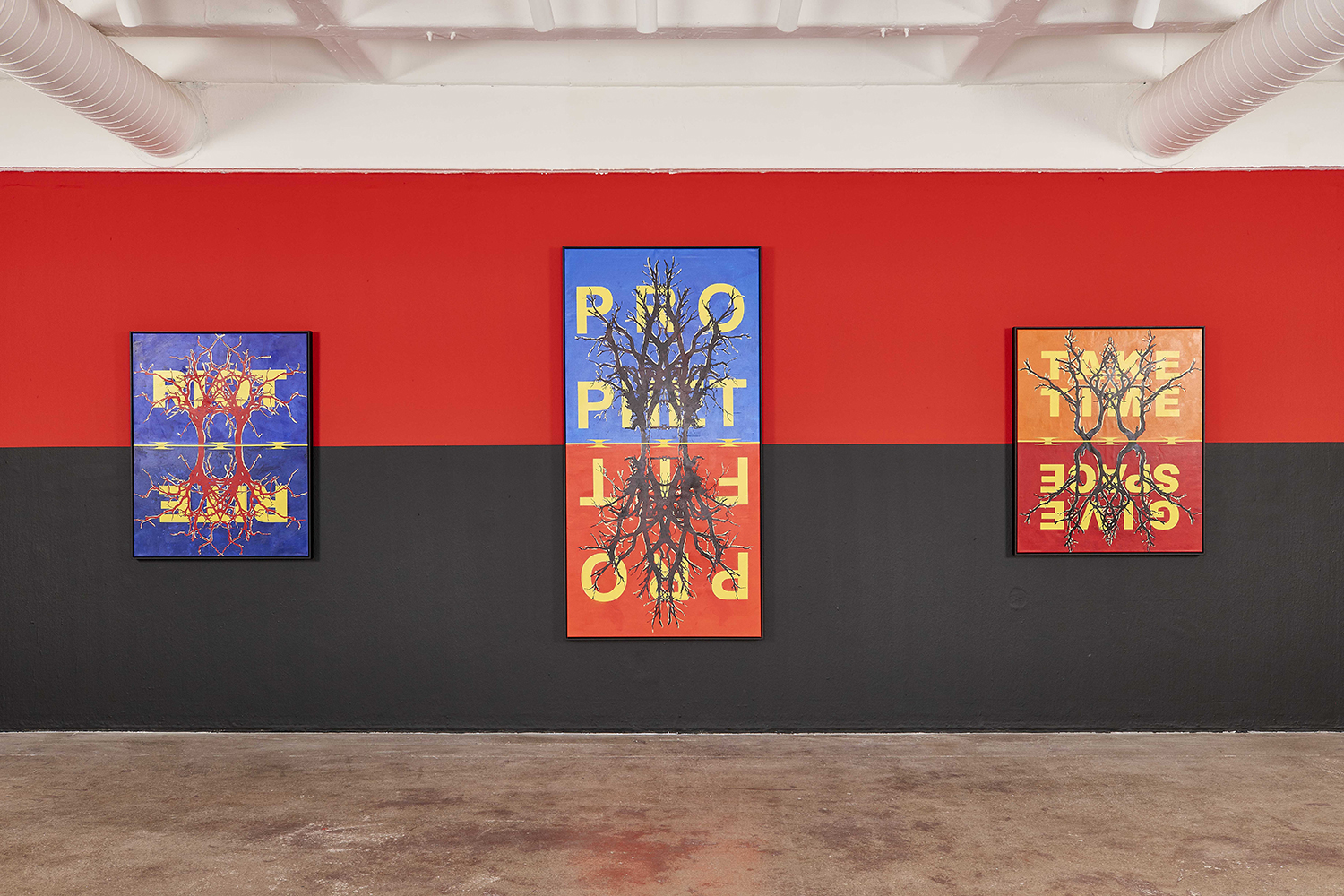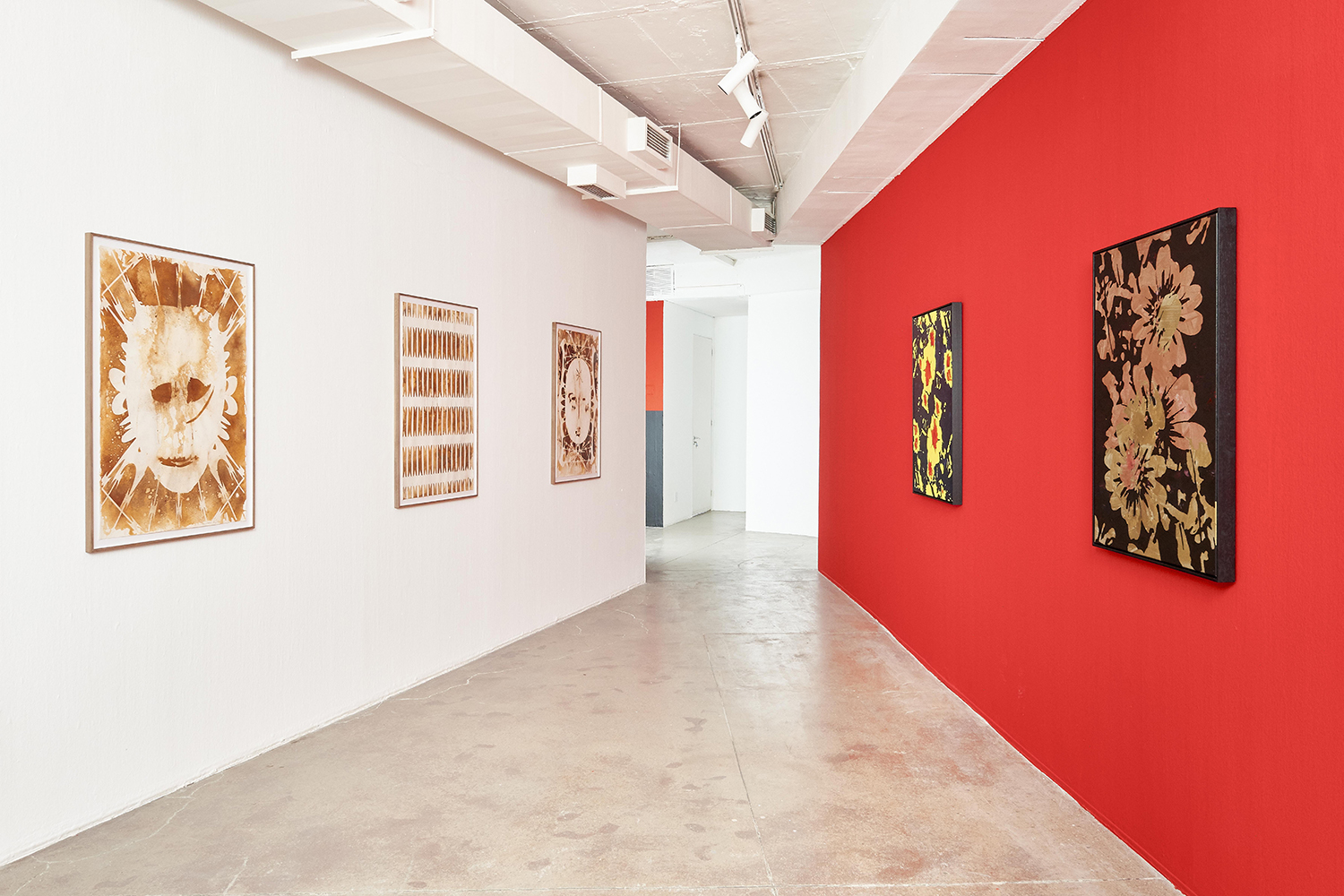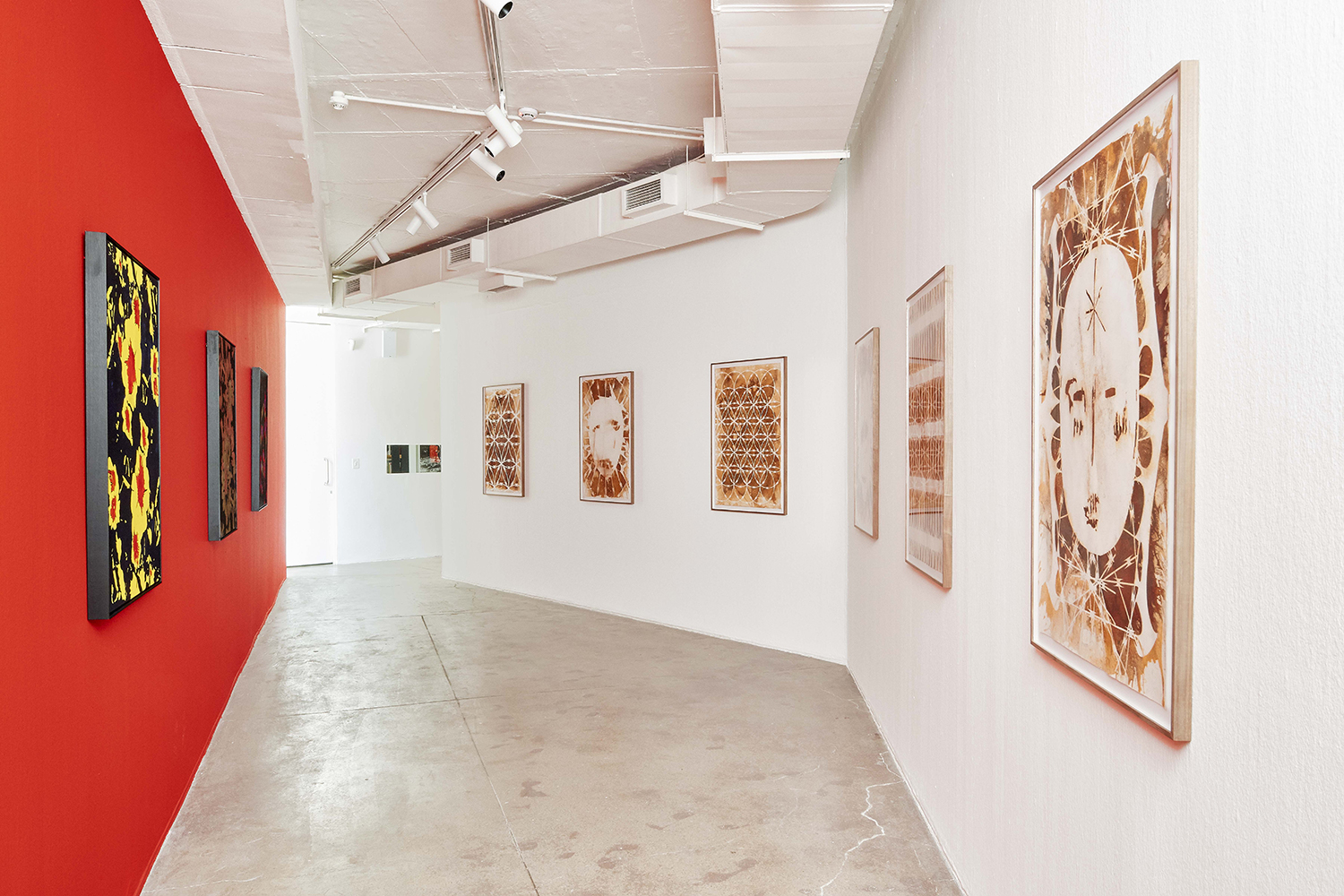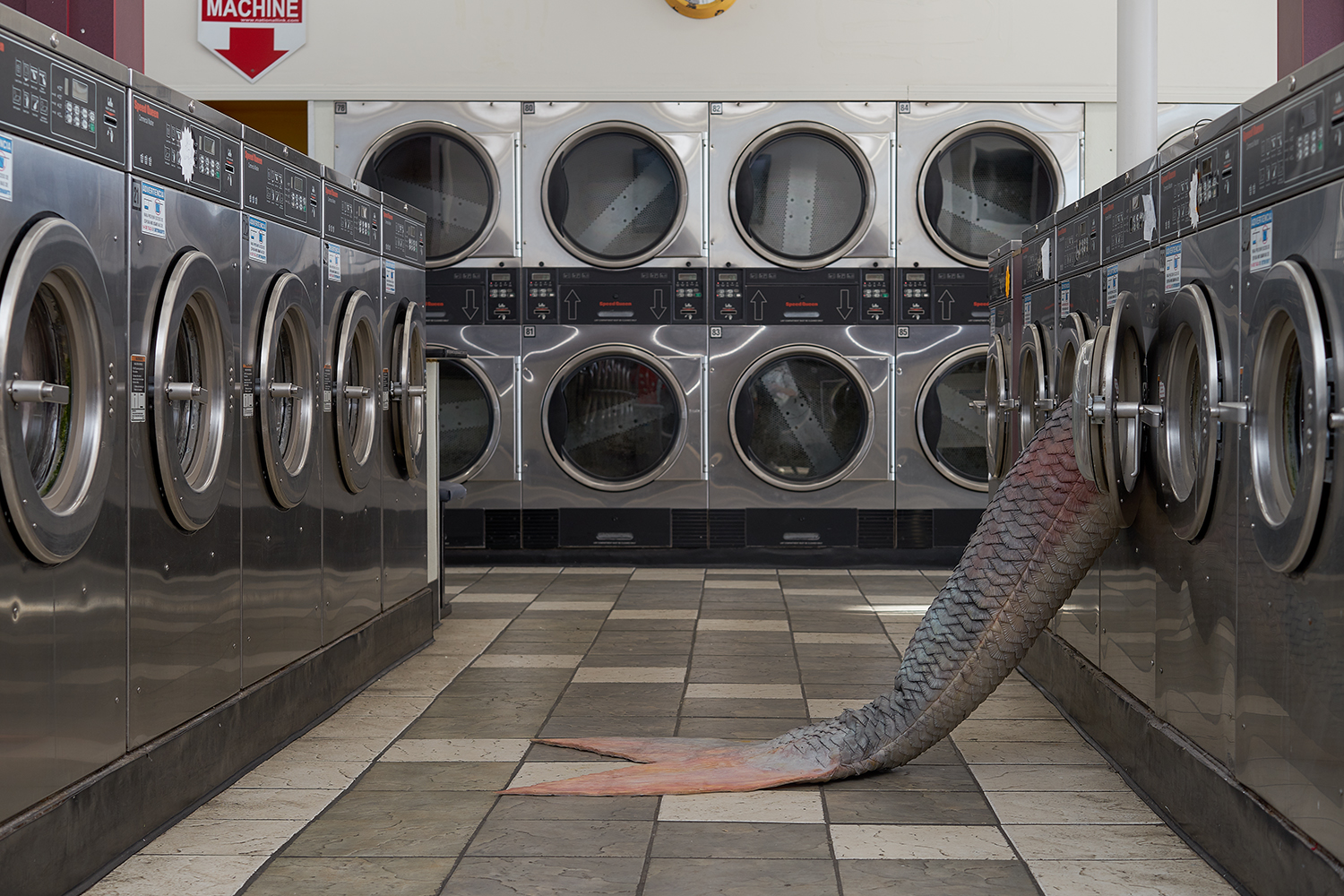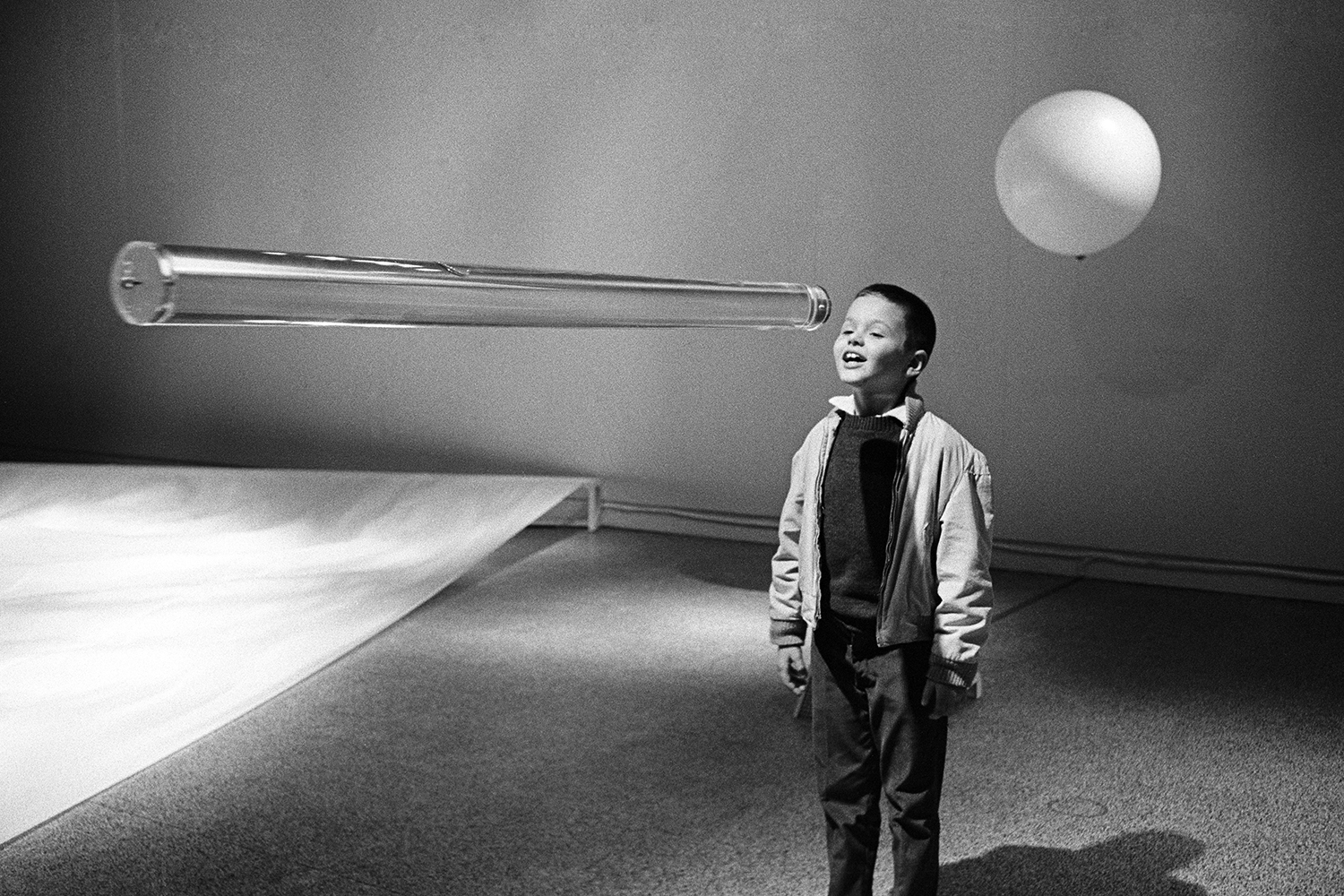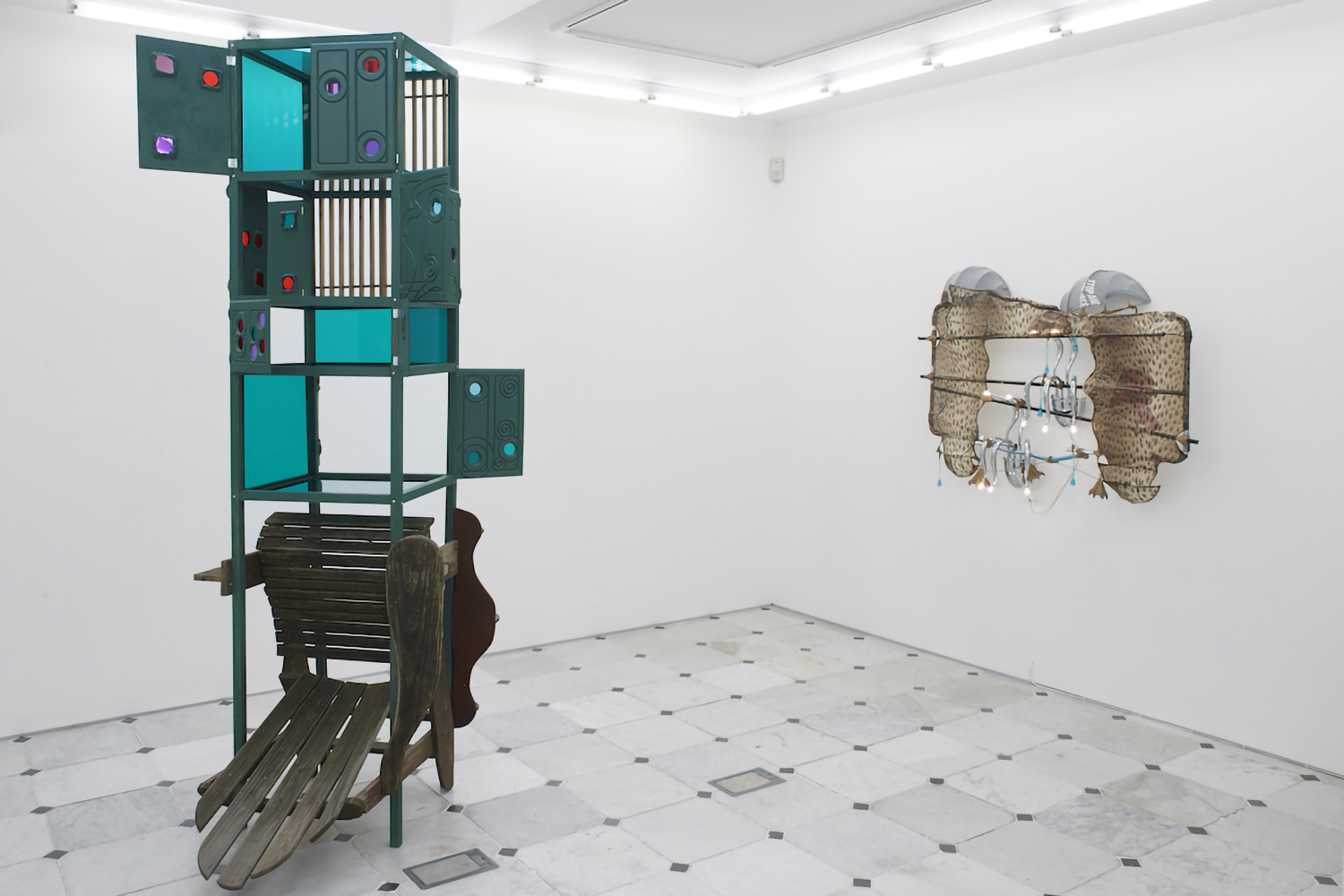The Belgium-based South African conceptualist Kendell Geers recently held a wide-ranging and powerful gallery show in Johannesburg, the city of his birth and the focus of much of his thematic attention. The title is a multiple pun: ingozi is an Nguni word meaning, roughly, danger, and also suggests “Jozi,” a common nickname for Johannesburg, as well as nkosi, a common South African term of respect for a superior being — a chief or a deity. The overlapping meanings reflect Geers’s densely theoretical contextualizing for much of his work, which marries contemporary geopolitics with an iconography of animistic and alchemical mysticism.
Geers’s early positioning as an agitprop conceptual interventionist retains a spectral presence in this show, but it also demonstrates beguilingly the added breadth of thematic concerns and material sophistication the artist has added to his repertoire over the years. The work exhibited is dominated conceptually by a recent series of paintings, acrylic on canvas, under the general rubric Daemon Est Deus Inversus. Each comprises a homophonic or associative word or phrase, painted in reverse, in combination with a mirrored landscape image. Geers comments that the compositions and textual homilies and homophones in these works are challenges to the “terra nullius” landscape tradition of colonial and apartheid-era South African painters, emblematically the most famous of these being J. H. Pierneef.
Elsewhere in the show, other works on canvas present as enticingly painterly and unusually optimistic in their color palettes, until we realize that their patterns resemble bullet holes in works referencing authors Baudelaire (Les Fleurs du Mal) and Kenyan Ngugi wa Thiong’o’s Petals of Blood. The subversive literary thematic continues in an older series of works using the unusual medium of rust on paper, the forbidding and confrontational patterning and mask-like faces of which reference Sartre and Fanon.
This tension between a mystical lyricism and an oppositional politics is made clear in the set of sculptural works on show, ranging from older to current works. Typically Geersian iconographies such as police batons and threateningly smashed bottle tops (made of gold) are evident, but so too are shamanistic bronze masks made, in a gesture that sums up the artist’s approach, out of found urban detritus.

